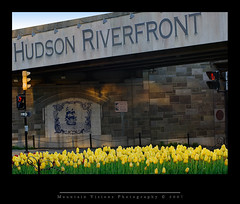Wow, talk about getting to the point.
What is the deal with Capital Region folk? They have this chip on their shoulder that they don't have any of the big sports or nice stadiums, but when they have something that is good they lose interest.
I've heard this about stores, "we want Macy's to stock the nice stuff." Macy's complies, people don't buy the stuff, Macy's goes back to selling what it had been selling.
When you want something, you have to support it. Albany isn't a vibrant metropolis, it's a 8-4, Monday thru Friday city. Most people living in the burbs of this shrinking city never have a desire to head downtown. The sad thing is, Albany has done a great job revitalizing itself, IN SPITE of the fact that the suburbanites don't support this. Believe me, you won't get shot walking from the car to the TU. As dead as it is, you might not even see another person on your short walk.
The most interesting stat about Albany, a telling tale, is that over the last 20 years the Capital Region population has remained fairly steady while the urban sprawl has increased drastically. One the flip side, the city of Albany's population as dropped like a rock.
I'm guessing the spread out of the population has made it inconvenient for this work day based population to get to the arena. Unfortunately, arenas are designed to put fannies in the seats. When they don't, they stop selling tickets and the team leaves.
Albany does a great job over the summer with various festivals in Washington Park, at the Empire Plaza, and Live At Five at Corning Preserve. All of course free, on weekend days, and always well attended.
I've always defended people of this region. When they chased out the Albany-Colonie Yankees, a team filled perpetually with up and coming stars (Jeter, Williams, Rivera, Petite and many others), I said baseball is a sport that needs a quality stadium to draw the casual fan. Heritage Park was at best a decent high school field and not proper for this region.
Then came the Joe, Joseph L. Bruno Stadium, in Troy and baseball fans have come out every year for the last 5 years. Not only that, they have increased attendance yearly. Of course, you have a beautiful stadium, a team that has won 4 out of 5 years, and if you didn't show up you'd have no excuse.
What I can't understand is why at an arena as nice as the Times Union, with a quality hockey team that is run by an organization that lets the team play to win, cannot draw a decent crowd.
Arenas are arenas, nothing special about any of them. There is only so much you can do to a giant warehouse with a sports court in the middle of it. But the TU is legit pro arena, it seats close to 20,000, and you can fill it when Billy Joel comes, or Hanah Montana. So why can't you show up to watch a few hockey games a year? Maybe support your Albany Conquest as well.
It can't be the ticket prices, because they are fair. Nope it's not NHL, but it's not NHL prices. You can afford to take the family to a Rats game, but how many can take a family of 5 to an NHL game???
Sure the Devils sucked the life out of the River Rats, but Carolina is letting the Rats play, and the hockey is good. The team is winning. It's not a great offensive team but they are physical, and can play defense.
Why can Rochester draw 7000 a night, but Albany only 3000 on a good night. Rochester also regularly sells out it's AAA baseball games. And Rochester is just 1 hour from Buffalo with an NHL team and another AAA baseball team. I use Rochester as an example because it's very similar in size and location to larger cities as Albany is.
Bottom line, Albany-Schenectady-Troy if you don't support your teams you will lose them, and while I'm sure you all fantasize about pro teams and the big city...AHL hockey, NY-Penn League baseball, and arena football are all you are going to get, unless you want to take a 3 hour drive every time you want to watch a live sporting event.
So support your teams (or don't cry when they are gone)!!!!
technorati tags:Albany, River Rats, Tri-City Valleycats, Troy, Schenectady, hockey, AHL, NY-Penn, League, NHL, Rochester, New York, baseball, NYC, Buffalo, Times Union Center, Times Union, Pearl, Albany Sucks, fans, Carolina Hurricanes, Hurricanes, Carolina, sports, K10D, D1H, Pentax, Nikon
Blogged with Flock

































